May 14, 1981
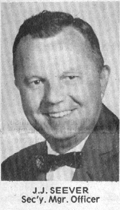
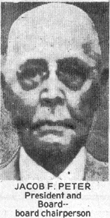
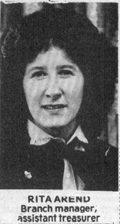
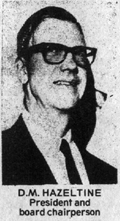
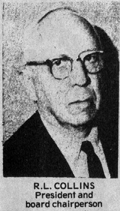
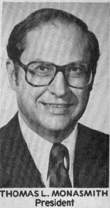
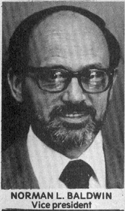
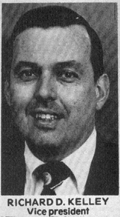
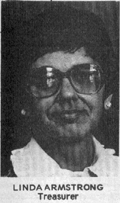
Picture #1 (missing) – Ohio Savings & Loan Association, when located at corner of Tiffin and Main Streets.
Picture #2 (missing) – In 1937, Ohio Savings and Loan Association moved into the First National Bank building at corner of Main and Center Streets.
Picture #3 (missing) – In 1948, the Association moved to its fifth location at corner of North and Main Streets.
For nearly 66 years, The Ohio Savings & Loan Association has been providing financial services for the Fostoria area.
It was on Sept. 18, 1915, that the Articles of Incorporation were filed with the Secretary of State of Ohio by Walter Witherspoon, who became the association’s attorney.
On Nov. 10, 1915, 30 local shareholders met with Witherspoon acting as temporary secretary and Carl Smith, local insurance agent, as temporary chairperson.
At that meeting, the first Board of Directors was unanimously elected: L.J. Eshelman, druggist; W.J. Wagner, men’s clothing; A.C. Hoyt, seeds; W.G. Emery, dentist; Frank Kiebel, dry goods; Frank Gebert, dentist; M.M. Carr, furniture and industrialist; A.J. Vogel, tailor; and James Cullen. At that same meeting, Cullen was elected the first president, Carl Smith, secretary (photo not available) and Witherspoon, attorney.
Shortly thereafter, the first official board meeting was held at the W. J. Wagner store, which was where the Mose Lamfrom Clothing Co. was for many years after Wagner quit business.
ANDES BLOCK FIRST LOCATION
Carl Smith’s insurance office at Room 3 in the Andes Block became the first office for the new saving and loan company. Then in May 1917, the Ohio Savings & Loan (OS & L) moved to 117 W. Center St. in the Burtscher Building where Fostoria Appliance Outlet is now.
In February 1927, the Association moved to the corner of Tiffin and Main Streets, where they remained for 10 years, a location some readers will remember by referring to Photo No. 1. It was there when Dillinger robbed The First National Bank, and Fred Gerlinger, the secretary, was cautioning the employees to take cover from the gunfire.
James Cullen, the first president, was succeeded by Dr. W.J. Emery in 1927 and Carl Smith, the first secretary and managing officer, was succeeded by Fred Gerlinger in 1931, a position he held until his death in 1942.
E.R. Kellogg, manager of the local J.C. Penney store, was elected president in 1933, holding that office until 1940.
FOURTH LOCATION
This period in time saw other changes in location and continued growth. In 1937, the association received its Certificate of Insurance from the Federal Savings–Loan Insurance Corp., insuring depositors’ accounts. In that same year, the company moved into the First National Bank building at the corner of Main and Center streets, which had been vacated by that bank when it took over the Union National Bank building, where Tri-County is now. Photo No. 2 shows the First National Bank building which was a landmark for many years.
In December 1940, J.F. Peter, a well-known Fostoria businessman was elected president. Shortly thereafter, J.J. Seever was employed as an assistant book- keeper to Edyth Allen. She had continuous employment for 41 years with the Association.
With the death of Fred Gerlinger in 1942, Seever was named secretary and man- ager officer. “Jakie,” as he was known to mot everyone, held that office until his death in 1965.
By 1948, it became known that the First National Bank building was to be demolished to make way for a new one-story structure, which eventually S.S. Kresge occupied.
Announcement of the demolition was received with remorse by many Fostorians, since it was a landmark, having been built by the Emerine family in the late 1800’s. It shows up in many postcards and photos taken during that period. Likewise, professional people occupying offices on the upper floors had to find new quarters, as did the OS & L.
MAIN AT NORTH FIFTH LOCATION
By then the association figured it was time to purchase a location. It selected the building on the southwest corner of North and Main Streets, which was the A. Beesch Tea Co. on the ground floor. In earlier days, there was a business college above. It was in 1948 that the association moved to its fifth location. Photo No. 3 shows it after it was remodeled, and with the time and temperature sign, which readers will remember.
From 1948 until 1965, the Association had spectacular growth, and it became evident that the Main and North location was not adequate for the future.
R.L. Collins became president in 1955, J.J. Seever died in 1965 and was succeeded by Tom Monasmith.
In 1969, Collins was elected chairperson of the board and Dwight Hazeltine became president.
In 1968, one of Fostoria’s prime location, the large impressive Dan McCarthy at 133 W. Tiffin St. became available for purchase. It was located west of the Municipal Building.
LAST MOVE TO WEST TIFFIN STREET
The association purchased that property, and after demolishing the home, built its new headquarters there in October 1969.
That was just part of the expansion plans, necessitated by growth. In 1974, OS & L opened a branch office in the Fostoria Plaza. Later all the property on the east side of Wood Street from Tiffin to South streets, was converted to parking facilities.
That area in an earlier period in the town’s history had an impressive home at Tiffin and Wood streets which was the home of W.H. Bannister, a prominent citizen. At the corner of Wood and South streets, there was a fine house where Andrew Emerine and family once lived. In later years, it was owned by Ross Jones. In the middle of that block was a large house which was the residence of Stella Hicks, circulation manager of The Fostoria Times.
The area reserved for parking by OS & L customers at 134 W. South St. was once the J.W. Sheely home, parents of Sam, owner of the farm on South Union Street, where Meadowlark Park is now.
That brings us to the present. The directors of the association are L. Glen Marshall, chairperson of the board; Thomas L. Monasmith, president; Loren Chalfin, chairperson. James G. Gray, Thomas L. Krupp, Richard Norton, William O’Donnell Sr., Ralph Sackett Jr., and Melvin Schreiner. Directors emeritus are R.L. Collins, Ralph Sackett Sr., and Dwight Hazeltine.
Officers of the association are Marshall, chairperson; Monasmith, president; Norman Baldwin, vice president; Richard Kelley, vice president; Steven Bish, vice president; Linda Armstrong, treasurer; Rita Arend, assistant treasurer and branch manager.
The growth of the association during the past 66 years is shown by the following figures: Capital stock subscribed in 1915 was $50,000, but paid up subscription at the end of the first year was only $8,350. At the end of 1916, assets were $21,000. In 1930, assets were $900,000. During the next five years they declined to $550,000 as the Depression continued. In 1955, assets were $5,430,000 and deposits were $4,866,529. At the end of 1980, first mortgage loans were $54,504,910 with total assets of $63,346,021. Loans during the early days usually amounted to less than $1,000.
Monasmith recalls his predecessors remarking about the Depression period, when money was scarce. Some advisors thought the association would not be able to weather the financial storm, and advised selling or quitting business.
“The stockholders and the officers had a different viewpoint…they were hard- working citizens who had a pride in their own achievements and in our town. We’ll make it,” they said, as Monasmith recalled the stories told him.
Other local persons who helped guide the association during the early period, in addition to those already named, were R.H. Ewan, Earl K. Cunningham, Richard Zeyen, Edith Hollingshead, Robert Solether, and Emerson Sackett.
Present employees are Marjorie Thomas, Luann Fleming, Becky Cramer, Jane Burns, Jami Cassidy, Janie Fairley, Lisa Adams, Terri Williams, Norma Martinez, Jan Schlesselman, Becky Reinhart, Becky Heiser, Joanne Pierce, Jennie Mortimer, Linda Wangler, Barbara Fox.